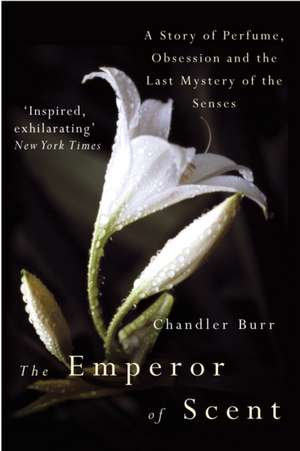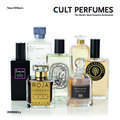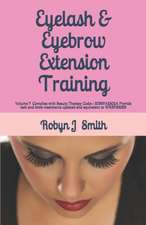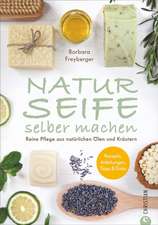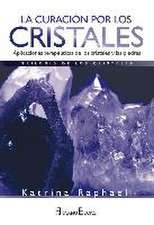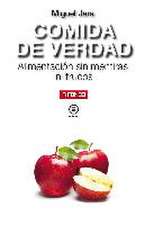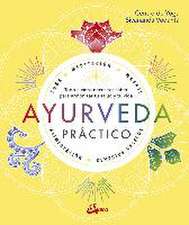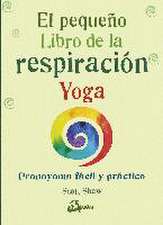The Emperor Of Scent: Bestsellers cărți despre parfumuri
Autor Chandler Burren Limba Engleză Paperback – 4 mar 2004
In the tradition of Susan Orlean's The Orchid Thief and James Gleick's Genius, The Emperor of Scent tells the story of Luca Turin, an utterly unusual, stubborn scientist, his otherworldly gift for perfume, his brilliant, quixotic theory of how we smell, and his struggle to set before the world the secret of the most enigmatic of our senses.
| Toate formatele și edițiile | Preț | Express |
|---|---|---|
| Paperback (2) | 60.48 lei 24-35 zile | +24.33 lei 4-10 zile |
| CORNERSTONE – 4 mar 2004 | 60.48 lei 24-35 zile | +24.33 lei 4-10 zile |
| Random House Trade – 31 ian 2004 | 117.39 lei 3-5 săpt. |
Preț: 60.48 lei
Preț vechi: 70.93 lei
-15% Nou
Puncte Express: 91
Preț estimativ în valută:
11.58€ • 12.58$ • 9.73£
11.58€ • 12.58$ • 9.73£
Carte disponibilă
Livrare economică 04-15 aprilie
Livrare express 15-21 martie pentru 34.32 lei
Preluare comenzi: 021 569.72.76
Specificații
ISBN-13: 9780099460237
ISBN-10: 0099460238
Pagini: 496
Dimensiuni: 129 x 197 x 37 mm
Greutate: 0.34 kg
Editura: CORNERSTONE
Seria Bestsellers cărți despre parfumuri
Locul publicării:United Kingdom
ISBN-10: 0099460238
Pagini: 496
Dimensiuni: 129 x 197 x 37 mm
Greutate: 0.34 kg
Editura: CORNERSTONE
Seria Bestsellers cărți despre parfumuri
Locul publicării:United Kingdom
Extras
Chapter 1
Mystery
Start with the deepest mystery of smell. No one knows how we do it.
Despite everything, despite the billions the secretive giant
corporations of smell have riding on it and the powerful computers they
throw at it, despite the most powerful sorcery of their legions of
chemists and the years of toiling in the labs and all the famous
neurowizardry aimed at mastering it, the exact way we smell
things–anything, crushed raspberry and mint, the subway at West
Fourteenth and Eighth, a newborn infant–remains a mystery. Luca Turin
began with that mystery.
Or perhaps he began further back, with the perfumes. “The reason I got
into this,” Turin will say, “is that I started collecting perfume. I’ve
loved perfume from when I was a kid in Paris and Italy.”
Or maybe (he’ll tell you another day, considering it from a different
angle), maybe it was “because I’m French, at least by upbringing.
Frenchmen will do things Anglo men won’t, and France is a country of
smells. There’s something called pourriture noble. Noble rot. It’s a
fungus. It grows on grapes, draws the water out, concentrates the juice
wonderfully, adds its own fungal flavor, and then you make wines like
the sweet Sauternes. Paradise. From rotten grapes. The idea that things
should be slightly dirty, overripe, slightly fecal is everywhere in
France. They like rotten cheese and dirty sheets and unwashed women. Guy
Robert is about seventy, a third-generation perfumer, lives in the south
of France, used to work for International Flavors & Fragrances, created
Calèche for Hermès. One day he asked me, ‘Est-ce que vous avez senti
some molecule or other?’ And I said no, I’d never smelled it, what’d it
smell like? And he considered this gravely and replied, ‘ça sent la
femme qui se néglige.’ ” (It smells of the woman who neglects herself.)
This makes him remember something, and he leans forward
enthusiastically. “One of the stories I heard when I started meeting the
perfumers and was let into their tightly closed world involves Jean
Carles, one of the greatest perfume makers in Paris–he used to work for
Roure in Grasse, near Nice, where all perfumes used to be made. He
became anosmic, lost his sense of smell, and he simply carried on from
memory, creating perfumes. Like Beethoven after his deafness. Jean
Carles went on to create the great Ma Griffe for Carven, a result of
pure imagination in the complete absence of the relevant physical sense.
Carles’s condition was known only to him and his son. When a client came
in, he’d go through the motions, make a big show of smelling various
ingredients and, finally, the perfume he had created, which he would
present with great gravity to the client, smelling it and waving its
odor around the room. And he couldn’t smell anything!” Turin smiles,
thinking about it.
The perfume obsession led Turin to write the perfume guide, which out of
the blue cracked open for him doors into the vast, secret world in which
perfumes are created, and there he started noticing little things that
didn’t make sense. A weird warp in official reality. Plus there were the
other clues, the small pockets of strangeness he bumped into in the
scientific literature, carefully fitting these into the puzzle without
even realizing it, without (as he’d be the first to admit) really
understanding what he was doing. And somewhere along the line, between
scouring the French Riviera for bottles of buried fragrances, pursuing
(in his own very particular way) the strange triplets of biology and
chemistry and physics, and prowling the library’s remotest stacks,
randomly sliding into things he found there–something that due to his
intellectual promiscuity he does a lot of–somewhere Luca Turin got the
idea of cracking smell. But it started with the mystery at smell’s
heart, which is not only that we don’t know how we do it. We actually
shouldn’t be able to smell at all.
From everything we know about evolution and molecular biology, smell
does the impossible. Look at two other systems inside your body, and
you’ll understand.
First, digestion. Human beings have evolved over millennia while eating
certain molecules–lipids and carbohydrates and proteins in the roots and
berries and various unlucky animals we’ve gotten our hands on. The tiny
carbs and proteins are made of tinier atoms and molecules, and for your
body to burn them as various fuels, evolution has engineered a digestive
system for you. The system’s first task is to recognize which raw fuel
it’s dealing with, so it can send out the right enzymes to break that
fuel down, process it for us. (Enzymes are catalysts, molecule
wranglers, and every enzyme in every one of our cells–and there are tens
of thousands of different enzymes–binds to a molecule and processes it.
Some break molecules down, scrapping them to use their dismantled parts,
some zip them together, and some rearrange them for the body’s own
purposes.) But in every case the enzyme “recognizes” its molecule by
that molecule’s particular shape. Fat, thin, lumpy, rounded, oblong,
rectangular. The enzyme feels some cleft in some molecule, fits its
special fingers into it like a key fits into a lock. And if the shape of
the lock and the shape of the key conform, bingo: Recognition! By shape.
And what gives a molecule its shape? We think of atoms as these
perfectly symmetrical spheres, shining and frozen on labels of
“Super-Strong!” kitchen cleaners, their electrons zipping around their
nuclei like perfectly spherical stainless-steel bracelets. Since
electrons move at close to the speed of light, if you filmed those
cartoon atoms in motion you’d see a round electron membrane, a solid,
buzzing sphere made of blisteringly fast-moving electrons.
But that’s kitchen-cleaner labels. The skins of atoms are actually made
of the paths of their outermost electrons, but not only don’t they zip
around in perfectly circular orbits, they carve an almost infinite
variety of 3-D orbital grooves around their nuclei. If that’s not
enough, atoms get shoved against and glued to one another in molecules,
forming bulbous structures, or nonspherical structures with disks and
oblongs. Imagine taking the giant inflatable balloons in the Macy’s
parade, each one shaped differently, and pushing them against one
another; their skins smoosh and warp, their bulbs and crevices contract
and expand. So the electrons zip along in these new configurations, in
elongated ellipses and valleys and sharp peaks and strange arcs. Which
means that each molecule creates a unique shape that an enzyme can
recognize as precisely as a retinal scan.
In fact, molecular recognition is arguably the fundamental mechanism of
all life, and it is based on this single, universal principle: Shape.
Receptor cells from your head to your glands and skin recognize enzymes,
hormones, and neurotransmitters by their molecular shapes. The only
variable is time.
The thing about enzymes is that evolution has learned over millennia
that you’re going to need to digest (break down, make up, or molecularly
rearrange) certain things–wild almonds and crab apples and dead
squirrels (sugars, fats, and proteins)–and not others–raw petroleum or
sand or silicate (fluorocarbons and borazines). So evolution has by now
selected for you a complete, fixed genetic library of enzymes that will
bind to and deal with a fixed list of molecules. (It’s not an exact
one-to-one enzyme-to-foodstuff ratio, but it’s precise enough that it’s
why your dog famously can’t digest chocolate, a culinary product his
wolf ancestors never ate: evolution never selected for dogs an enzyme
that recognized the shape of chocolate’s molecules, so if you feed them
these molecules, they get sick.) And if just one enzyme is missing, you
end up with nasty, sometimes lethal, diseases and disorders. You can
dump the squirrels for terrine de lapin et petits légumes, it doesn’t
matter: it’s the same lipids and proteins in your library, and as long
as you don’t eat, say, plastic, for which you have no enzyme, your
digestive system happily recognizes the molecules you consume, be it
McDonald’s or the fifth course at the Clifton Inn. The thing to remember
here, however, is time: enzymes stand ready to identify the right
molecule instantly.
For contrast, take the immune system. Antibodies are designed (they have
to be) to bind to things that weren’t around our ancestors, unknown
bacteria and foreign parasites and each year’s new, nastier, mutated
viruses we’ve never seen before. Your visual system can recognize things
that weren’t in Homo sapiens’s evolutionary environment, like Ferraris
and Star Wars and Barbra Streisand, and so can your immune system, but
your visual system deciphers photon wavelengths while your immune system
is feeling out molecules’ shapes. Here’s the difference. When it
encounters a new virus, the immune system starts rapidly rearranging
genes at random, spewing out antibodies until it hits on one that fits
the invader’s shape, binds to it, and destroys it. (It’s the exact
opposite of a “fixed library” idea; Susumu Tonegawa of MIT won a 1987
Nobel Prize for figuring this out.) So that’s why you’re at home for a
few days with the flu. Your immune system needs time to break the
invader’s shape code and produce the shape weapon to fight it. Where the
digestive system is limited but instant, the immune system is
unlimited–it “takes all comers”; but it also takes time.
But here is the problem. Someone hands you a molecule called a borane.
You lift it to your nose. And without fail, you smell it. There’s just
one catch: boranes were created by inorganic chemists at the beginning
of the twentieth century and never existed in the ancestral environment
of any human being. Yet we smell them. This is impossible.
The fact is that we have never found any molecule in the smellable size
range that we could not smell instantly. This is the mystery of smell.
You smell boranes instantly, not in a few days or weeks, even though you
cannot have an evolutionarily selected receptor molecule for their
unique shape. Smell is unlimited, like the immune system, and yet it is
instant, like the digestive system. And everything we know about Shape
and molecular recognition says this should be impossible.
We understand the human sense of vision intimately, down to exactly
which vibration of a particle of light caught in the vision receptor in
the retina will make us see exactly which color (a 1967 Nobel given for
vision). We know hearing in exquisite detail, can predict with absolute
accuracy which air vibration in the cochlea will create what tone (a
1961 Nobel for hearing). But of smell, we do not know, cannot predict.
This is why smell is the object of two cut-throat races.
The first is scientific. This all-out race is being run in some of the
most powerful labs (by the most competitive researchers with the biggest
egos). The prize is the unscrambling of one of the most important
secrets of biology, not to mention (everyone is betting on this) a Nobel
Prize. An astounding 1 percent of human genes, we recently discovered,
are devoted to olfaction. “So smell must be incredibly important for
us,” notes NIH geneticist Dean Hamer, “to devote so much of our DNA to
it. The only comparable system–and this was the big surprise to
everyone–is the immune system, and we all know why it’s important to
fight off invaders. This says smell was central in our evolution in a
way that, presently, we don’t really understand.”
The other race is for money. Approximately $20 billion is generated
every year by industrially manufactured smells, and virtually all these
smells are made by only seven companies, the Big Boys, which split the
billions among themselves. The Big Boys shroud themselves in secrecy to
protect the public brand image of their clients. They make the molecules
that you associate with the smells of Tide laundry detergent, Clorox
bleach, and Palmolive soap, but they are also the actual creators of the
superexpensive fragrances sold under the rarefied labels Calvin Klein
and Chanel and L’Oréal, Miyake and Armani. The creation of a single
commercially successful fragrance molecule represents tens of millions
of dollars, and the Big Boys employ an army of chemists tasked with
creating them. The way to create them is the magic formula.
This is why Luca Turin’s theory is as important as it is unknown. It is
not only a new theory of smell. Financially, it implies a technology
that threatens thousands of engineers and corporate executives, the
investment of billions of dollars, and the industrial structures of
massive corporations in North America, Europe, and Japan.
Scientifically, it is a wildly revolutionary proposal contradicting a
universal, bedrock assumption of biology–Shape–and positing an
astounding, microscopic electrical mechanism that operates inside the
human body and is made of human flesh. You might as well, fumed one
furious scientist who heard about Turin’s idea, propose a new theory of
digestion through tiny nuclear reactors in people’s stomachs. Perhaps
the only thing odder than the theory is the story of how Turin actually
came up with it, and then of what happened to him when he did, which is
what this book is about.
From the Hardcover edition.
Mystery
Start with the deepest mystery of smell. No one knows how we do it.
Despite everything, despite the billions the secretive giant
corporations of smell have riding on it and the powerful computers they
throw at it, despite the most powerful sorcery of their legions of
chemists and the years of toiling in the labs and all the famous
neurowizardry aimed at mastering it, the exact way we smell
things–anything, crushed raspberry and mint, the subway at West
Fourteenth and Eighth, a newborn infant–remains a mystery. Luca Turin
began with that mystery.
Or perhaps he began further back, with the perfumes. “The reason I got
into this,” Turin will say, “is that I started collecting perfume. I’ve
loved perfume from when I was a kid in Paris and Italy.”
Or maybe (he’ll tell you another day, considering it from a different
angle), maybe it was “because I’m French, at least by upbringing.
Frenchmen will do things Anglo men won’t, and France is a country of
smells. There’s something called pourriture noble. Noble rot. It’s a
fungus. It grows on grapes, draws the water out, concentrates the juice
wonderfully, adds its own fungal flavor, and then you make wines like
the sweet Sauternes. Paradise. From rotten grapes. The idea that things
should be slightly dirty, overripe, slightly fecal is everywhere in
France. They like rotten cheese and dirty sheets and unwashed women. Guy
Robert is about seventy, a third-generation perfumer, lives in the south
of France, used to work for International Flavors & Fragrances, created
Calèche for Hermès. One day he asked me, ‘Est-ce que vous avez senti
some molecule or other?’ And I said no, I’d never smelled it, what’d it
smell like? And he considered this gravely and replied, ‘ça sent la
femme qui se néglige.’ ” (It smells of the woman who neglects herself.)
This makes him remember something, and he leans forward
enthusiastically. “One of the stories I heard when I started meeting the
perfumers and was let into their tightly closed world involves Jean
Carles, one of the greatest perfume makers in Paris–he used to work for
Roure in Grasse, near Nice, where all perfumes used to be made. He
became anosmic, lost his sense of smell, and he simply carried on from
memory, creating perfumes. Like Beethoven after his deafness. Jean
Carles went on to create the great Ma Griffe for Carven, a result of
pure imagination in the complete absence of the relevant physical sense.
Carles’s condition was known only to him and his son. When a client came
in, he’d go through the motions, make a big show of smelling various
ingredients and, finally, the perfume he had created, which he would
present with great gravity to the client, smelling it and waving its
odor around the room. And he couldn’t smell anything!” Turin smiles,
thinking about it.
The perfume obsession led Turin to write the perfume guide, which out of
the blue cracked open for him doors into the vast, secret world in which
perfumes are created, and there he started noticing little things that
didn’t make sense. A weird warp in official reality. Plus there were the
other clues, the small pockets of strangeness he bumped into in the
scientific literature, carefully fitting these into the puzzle without
even realizing it, without (as he’d be the first to admit) really
understanding what he was doing. And somewhere along the line, between
scouring the French Riviera for bottles of buried fragrances, pursuing
(in his own very particular way) the strange triplets of biology and
chemistry and physics, and prowling the library’s remotest stacks,
randomly sliding into things he found there–something that due to his
intellectual promiscuity he does a lot of–somewhere Luca Turin got the
idea of cracking smell. But it started with the mystery at smell’s
heart, which is not only that we don’t know how we do it. We actually
shouldn’t be able to smell at all.
From everything we know about evolution and molecular biology, smell
does the impossible. Look at two other systems inside your body, and
you’ll understand.
First, digestion. Human beings have evolved over millennia while eating
certain molecules–lipids and carbohydrates and proteins in the roots and
berries and various unlucky animals we’ve gotten our hands on. The tiny
carbs and proteins are made of tinier atoms and molecules, and for your
body to burn them as various fuels, evolution has engineered a digestive
system for you. The system’s first task is to recognize which raw fuel
it’s dealing with, so it can send out the right enzymes to break that
fuel down, process it for us. (Enzymes are catalysts, molecule
wranglers, and every enzyme in every one of our cells–and there are tens
of thousands of different enzymes–binds to a molecule and processes it.
Some break molecules down, scrapping them to use their dismantled parts,
some zip them together, and some rearrange them for the body’s own
purposes.) But in every case the enzyme “recognizes” its molecule by
that molecule’s particular shape. Fat, thin, lumpy, rounded, oblong,
rectangular. The enzyme feels some cleft in some molecule, fits its
special fingers into it like a key fits into a lock. And if the shape of
the lock and the shape of the key conform, bingo: Recognition! By shape.
And what gives a molecule its shape? We think of atoms as these
perfectly symmetrical spheres, shining and frozen on labels of
“Super-Strong!” kitchen cleaners, their electrons zipping around their
nuclei like perfectly spherical stainless-steel bracelets. Since
electrons move at close to the speed of light, if you filmed those
cartoon atoms in motion you’d see a round electron membrane, a solid,
buzzing sphere made of blisteringly fast-moving electrons.
But that’s kitchen-cleaner labels. The skins of atoms are actually made
of the paths of their outermost electrons, but not only don’t they zip
around in perfectly circular orbits, they carve an almost infinite
variety of 3-D orbital grooves around their nuclei. If that’s not
enough, atoms get shoved against and glued to one another in molecules,
forming bulbous structures, or nonspherical structures with disks and
oblongs. Imagine taking the giant inflatable balloons in the Macy’s
parade, each one shaped differently, and pushing them against one
another; their skins smoosh and warp, their bulbs and crevices contract
and expand. So the electrons zip along in these new configurations, in
elongated ellipses and valleys and sharp peaks and strange arcs. Which
means that each molecule creates a unique shape that an enzyme can
recognize as precisely as a retinal scan.
In fact, molecular recognition is arguably the fundamental mechanism of
all life, and it is based on this single, universal principle: Shape.
Receptor cells from your head to your glands and skin recognize enzymes,
hormones, and neurotransmitters by their molecular shapes. The only
variable is time.
The thing about enzymes is that evolution has learned over millennia
that you’re going to need to digest (break down, make up, or molecularly
rearrange) certain things–wild almonds and crab apples and dead
squirrels (sugars, fats, and proteins)–and not others–raw petroleum or
sand or silicate (fluorocarbons and borazines). So evolution has by now
selected for you a complete, fixed genetic library of enzymes that will
bind to and deal with a fixed list of molecules. (It’s not an exact
one-to-one enzyme-to-foodstuff ratio, but it’s precise enough that it’s
why your dog famously can’t digest chocolate, a culinary product his
wolf ancestors never ate: evolution never selected for dogs an enzyme
that recognized the shape of chocolate’s molecules, so if you feed them
these molecules, they get sick.) And if just one enzyme is missing, you
end up with nasty, sometimes lethal, diseases and disorders. You can
dump the squirrels for terrine de lapin et petits légumes, it doesn’t
matter: it’s the same lipids and proteins in your library, and as long
as you don’t eat, say, plastic, for which you have no enzyme, your
digestive system happily recognizes the molecules you consume, be it
McDonald’s or the fifth course at the Clifton Inn. The thing to remember
here, however, is time: enzymes stand ready to identify the right
molecule instantly.
For contrast, take the immune system. Antibodies are designed (they have
to be) to bind to things that weren’t around our ancestors, unknown
bacteria and foreign parasites and each year’s new, nastier, mutated
viruses we’ve never seen before. Your visual system can recognize things
that weren’t in Homo sapiens’s evolutionary environment, like Ferraris
and Star Wars and Barbra Streisand, and so can your immune system, but
your visual system deciphers photon wavelengths while your immune system
is feeling out molecules’ shapes. Here’s the difference. When it
encounters a new virus, the immune system starts rapidly rearranging
genes at random, spewing out antibodies until it hits on one that fits
the invader’s shape, binds to it, and destroys it. (It’s the exact
opposite of a “fixed library” idea; Susumu Tonegawa of MIT won a 1987
Nobel Prize for figuring this out.) So that’s why you’re at home for a
few days with the flu. Your immune system needs time to break the
invader’s shape code and produce the shape weapon to fight it. Where the
digestive system is limited but instant, the immune system is
unlimited–it “takes all comers”; but it also takes time.
But here is the problem. Someone hands you a molecule called a borane.
You lift it to your nose. And without fail, you smell it. There’s just
one catch: boranes were created by inorganic chemists at the beginning
of the twentieth century and never existed in the ancestral environment
of any human being. Yet we smell them. This is impossible.
The fact is that we have never found any molecule in the smellable size
range that we could not smell instantly. This is the mystery of smell.
You smell boranes instantly, not in a few days or weeks, even though you
cannot have an evolutionarily selected receptor molecule for their
unique shape. Smell is unlimited, like the immune system, and yet it is
instant, like the digestive system. And everything we know about Shape
and molecular recognition says this should be impossible.
We understand the human sense of vision intimately, down to exactly
which vibration of a particle of light caught in the vision receptor in
the retina will make us see exactly which color (a 1967 Nobel given for
vision). We know hearing in exquisite detail, can predict with absolute
accuracy which air vibration in the cochlea will create what tone (a
1961 Nobel for hearing). But of smell, we do not know, cannot predict.
This is why smell is the object of two cut-throat races.
The first is scientific. This all-out race is being run in some of the
most powerful labs (by the most competitive researchers with the biggest
egos). The prize is the unscrambling of one of the most important
secrets of biology, not to mention (everyone is betting on this) a Nobel
Prize. An astounding 1 percent of human genes, we recently discovered,
are devoted to olfaction. “So smell must be incredibly important for
us,” notes NIH geneticist Dean Hamer, “to devote so much of our DNA to
it. The only comparable system–and this was the big surprise to
everyone–is the immune system, and we all know why it’s important to
fight off invaders. This says smell was central in our evolution in a
way that, presently, we don’t really understand.”
The other race is for money. Approximately $20 billion is generated
every year by industrially manufactured smells, and virtually all these
smells are made by only seven companies, the Big Boys, which split the
billions among themselves. The Big Boys shroud themselves in secrecy to
protect the public brand image of their clients. They make the molecules
that you associate with the smells of Tide laundry detergent, Clorox
bleach, and Palmolive soap, but they are also the actual creators of the
superexpensive fragrances sold under the rarefied labels Calvin Klein
and Chanel and L’Oréal, Miyake and Armani. The creation of a single
commercially successful fragrance molecule represents tens of millions
of dollars, and the Big Boys employ an army of chemists tasked with
creating them. The way to create them is the magic formula.
This is why Luca Turin’s theory is as important as it is unknown. It is
not only a new theory of smell. Financially, it implies a technology
that threatens thousands of engineers and corporate executives, the
investment of billions of dollars, and the industrial structures of
massive corporations in North America, Europe, and Japan.
Scientifically, it is a wildly revolutionary proposal contradicting a
universal, bedrock assumption of biology–Shape–and positing an
astounding, microscopic electrical mechanism that operates inside the
human body and is made of human flesh. You might as well, fumed one
furious scientist who heard about Turin’s idea, propose a new theory of
digestion through tiny nuclear reactors in people’s stomachs. Perhaps
the only thing odder than the theory is the story of how Turin actually
came up with it, and then of what happened to him when he did, which is
what this book is about.
From the Hardcover edition.
Recenzii
"A brilliant, feisty scientist at the center of a nasty, back-stabbing, utterly absorbing, cliff-hanging scramble for the Nobel Prize. The Emperor of Scent is a quirky, wonderful book."
-John Berendt, author of Midnight in the Garden of Good and Evil
"Professional perfume critic, obsessive collector of rare fragrances, academic-bad-boy biochemist and world-class eccentric, Luca Turin would be the worthy subject of a book even if he hadn't come up with a revolutionary scientific theory. Written with skill and verve, The Emperor of Scent is an engrossing intellectual detective story about one iconoclast's quest to solve a centuries-old mystery--how smell works."
-Miles Harvey, author of The Island of Lost Maps
"The Emperor of Scent is a gem of a book--a suspense story at whose heart is a man of super-human powers who is also flawed and justifiably arrogant and dangerously steeped in hubris. I challenge any intelligent, curious mind not to tumble into this story and find themselves immediately engrossed. I fell in love with Luca Turin--he is everything I admire in a human: irreverent, witty, imaginative, determined, elitist without a trace of snobbery and above all a creative genius. And Chandler Burr is a magician himself, and a man we should all be so lucky to have at a dinner party: I was mesmerized and enlightened by the many perfect asides woven into the main body of this incredible true tale."
-Alexandra Fuller, author of Don't Let's Go to the Dogs Tonight
“What happens when Luca Turin, a likable scientist who happens to possess an unusually sensitive nose, proposes a new theory of smell that promises to unravel the mystery [of scent] once and for all? That’s what readers find out in this often funny, picaresque exposé of the closed world of whiffs, aromas and odors—and the people who study them.”
—Publishers Weekly (starred review)
“Exhibiting more grace than a magician in tails, Chandler Burr brings science and the people who practice it to life in The Emperor of Scent. . . . Burr does a remarkable job of explaining both Turin, the man behind the idea, and his science.”
—The Denver Post
“Chandler Burr . . . has transformed a chance meeting with a curious biophysicist named Luca Turin into an amusing and poetic adventure in science and art.”
—The Washington Post
-John Berendt, author of Midnight in the Garden of Good and Evil
"Professional perfume critic, obsessive collector of rare fragrances, academic-bad-boy biochemist and world-class eccentric, Luca Turin would be the worthy subject of a book even if he hadn't come up with a revolutionary scientific theory. Written with skill and verve, The Emperor of Scent is an engrossing intellectual detective story about one iconoclast's quest to solve a centuries-old mystery--how smell works."
-Miles Harvey, author of The Island of Lost Maps
"The Emperor of Scent is a gem of a book--a suspense story at whose heart is a man of super-human powers who is also flawed and justifiably arrogant and dangerously steeped in hubris. I challenge any intelligent, curious mind not to tumble into this story and find themselves immediately engrossed. I fell in love with Luca Turin--he is everything I admire in a human: irreverent, witty, imaginative, determined, elitist without a trace of snobbery and above all a creative genius. And Chandler Burr is a magician himself, and a man we should all be so lucky to have at a dinner party: I was mesmerized and enlightened by the many perfect asides woven into the main body of this incredible true tale."
-Alexandra Fuller, author of Don't Let's Go to the Dogs Tonight
“What happens when Luca Turin, a likable scientist who happens to possess an unusually sensitive nose, proposes a new theory of smell that promises to unravel the mystery [of scent] once and for all? That’s what readers find out in this often funny, picaresque exposé of the closed world of whiffs, aromas and odors—and the people who study them.”
—Publishers Weekly (starred review)
“Exhibiting more grace than a magician in tails, Chandler Burr brings science and the people who practice it to life in The Emperor of Scent. . . . Burr does a remarkable job of explaining both Turin, the man behind the idea, and his science.”
—The Denver Post
“Chandler Burr . . . has transformed a chance meeting with a curious biophysicist named Luca Turin into an amusing and poetic adventure in science and art.”
—The Washington Post
Notă biografică
Chandler Burr is the author of A Separate Creation: The Search for the Biological Origins of Sexual Orientation. He has contributed to The Atlantic and has written for The New York Times Magazine, The Washington Post, the Los Angeles Times, and other publications.
